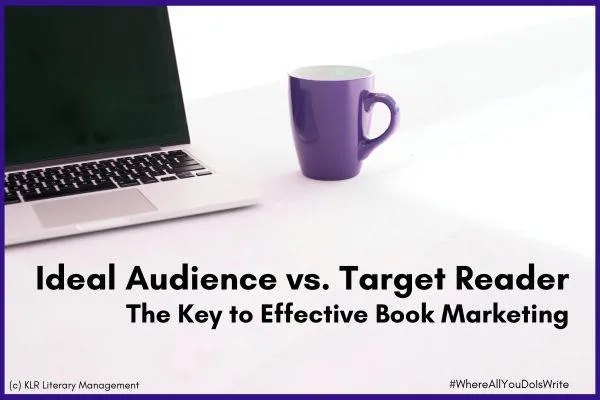Random THoughts
You never know what I might say...

Ideal Audience vs. Target Reader: The Key to Effective Book Marketing
Ideal Audience vs. Target Reader: The Key to Effective Book Marketing
If you’ve ever felt like you’re shouting into the void when marketing your book, you’re not alone. One of the biggest mistakes authors make is trying to market to everyone. The truth? Your book isn’t for everyone—and that’s a good thing.
Successful book marketing starts with understanding exactly who you’re trying to reach. That’s where the ideal audience and target reader come in. While these terms are often used interchangeably, they play different (but equally important) roles in crafting a book marketing strategy that actually works.
What’s the Difference Between an Ideal Audience and a Target Reader?
Your Ideal Audience: The Big Picture
Think of your ideal audience as the broader group of people most likely to enjoy or benefit from your book. This group shares common demographics, interests, or pain points that make your book appealing to them.
For example:
A YA fantasy novel’s ideal audience might be teen readers (ages 14–18) who love epic quests and strong female protagonists.
A self-help book on productivity might have an ideal audience of busy professionals looking for ways to manage their time more effectively.
Your ideal audience helps you determine where to focus your marketing efforts. Where do these readers hang out? What platforms do they use? What type of content resonates with them? Understanding this helps you put your book in the right places.
Your Target Reader: The Personal Connection
Now, zoom in. Your target reader is a specific person within your ideal audience—your dream reader. Instead of thinking about a group, imagine one real person who embodies the audience you’re trying to reach.
For example:
The YA fantasy target reader could be "Samantha, a 16-year-old who devours books about magical worlds, follows her favorite authors on TikTok, and dreams of becoming a writer herself."
The self-help book target reader might be "Mark, a 38-year-old entrepreneur juggling a startup and family life, searching for ways to be more productive without burning out."
Defining your target reader persona allows you to craft messaging that feels personal rather than generic. When your marketing speaks directly to an individual’s needs, struggles, and desires, it resonates on a deeper level.
Why Does This Matter for Book Marketing?
Understanding both your ideal audience and your target reader helps you:
✅ Create more effective book descriptions and sales copy—speak directly to what your ideal reader wants.
✅ Choose the right marketing channels—stop wasting time on platforms where your audience isn’t.
✅ Develop content that connects—write blog posts, emails, and social media updates that feel tailored to the right people.
✅ Sell more books—because your marketing will finally feel like a conversation, not a broadcast.
How to Identify Your Ideal Audience & Target Reader
Step 1: Look at Your Book’s Core Themes
What’s your book about? Who would find it helpful, entertaining, or inspiring?
Step 2: Research Your Genre & Similar Books
Who reads books like yours? Check reviews, social media comments, and audience insights from bestselling authors in your niche.
Step 3: Create Your Target Reader Persona
Give your reader a name, age, occupation, hobbies, and struggles. Where do they hang out online? What type of content do they consume? What motivates them to buy books?
Step 4: Align Your Marketing
Now that you know who you’re speaking to, craft marketing messages, social media content, and email campaigns that feel like a direct conversation with that reader.
Final Thoughts: Speak to the Right People
When you understand who your book is truly for, marketing becomes easier and more effective. Instead of trying to reach everyone, you’ll focus on the right readers—the ones who will love your book, recommend it to friends, and become lifelong fans.
So, take the time to define your ideal audience and target reader—your future fans are waiting.
© Copyright 2025. KLR Literary Management. All rights reserved. | Privacy Policy | Terms of Use

